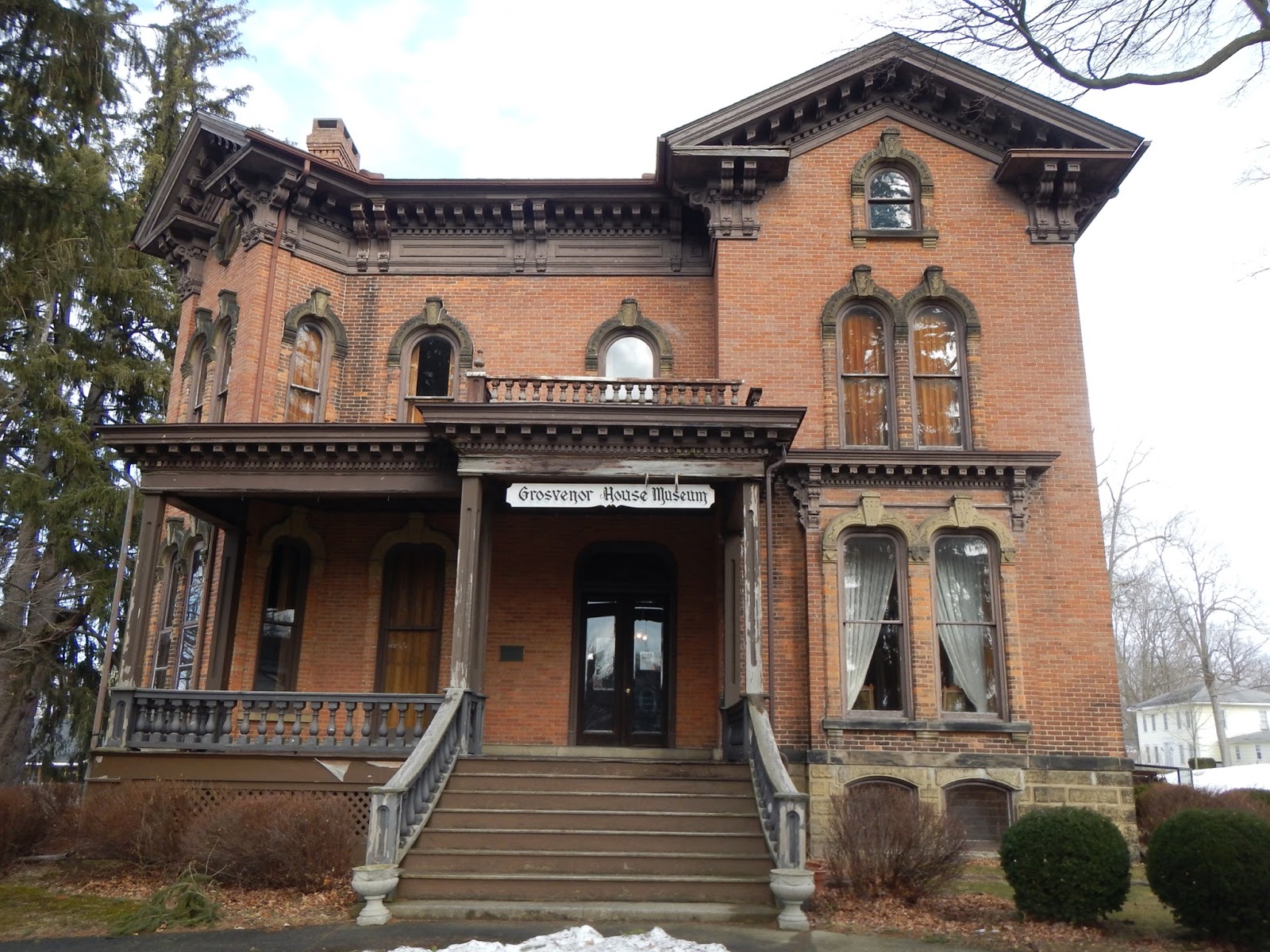
While serving as the Michigan State Treasurer, Ebenezer Oliver Grosvenor conscripted the help of the prominent State Capitol architect, Elijah E. Myers, to design for him his new Victorian mansion.
Myers’ claim to fame occurred between 1870-1880 as he designed three State Capitol buildings, the first of which was the Michigan State Capitol.
While he has the record for designing the greatest number of state capitol buildings, he only created plans for only a handful of houses, the Grosvenor residence existing as one of the most prominent.
Inside of the home, Myers’ past education in law and experience in carpentry is made evident by the central ground-floor hallway which resembled many of the courthouses of the time, and the variety of expensive and decorative woodwork throughout the home.
The Michigan Historical Marker outside of the home boasts 33 rooms in the home, many of which have 12-foot ceilings, though the back of the home and former servants’ quarters are ten-foot and eight-foot ceilings respectively.
Walnut and butternut woods with thick plate glass comprise the front of the house, while the back of the house is made of simple pine wood and cheaper glass, according to tour guide Dick Morgan.
“It was basically a party house, to show off your money and entertain your friends and business acquaintances,” Morgan said.
Having also worked in and owned a Jonesville bank for many years, Grosvenors likely accumulated many such persons. He served two terms as a state senator and treasurer, and one term as lieutenant governor according to Michigan History Center.
In the parlor hangs a picture original to the house of President McKinley before he was president.
“We figure he probably visited this house, whether he stayed here or not, we’re not sure,” Morgan said, “But I wouldn’t be surprised if he did consider Grosvenor’s political connections.”
Though the house cost $37,000 at the time of construction, it is now estimated to cost between five and six million dollars to reconstruct.
One of the most unique aspects of the home was its heat and light systems.
“The home had its own gas plant plugged into the house to the chandeliers so they would have had gaslighting,” Morgan said. “It also has a gas-fired water heater with five cisterns and a two-man pump in the basement that pumped water to a holding tank above the servants’ quarters, so the home had hot and cold running water.”
Because of the furnace in the basement, the house also had a rudimentary form of central heating. Later on in the 1900s when electricity was added to the home, the workers were able to route the lines where the gas lines were, incurring no damage to the home.
But more than wealth, the house stood and continues to stand as a symbol for a strong education system.
A champion of education, Grosvenor served on the Hillsdale Board of Trustees from 1871 until 1878. According to the 1869 Treasurer of the Hillsdale College Alumni Association, Elon Reynolds, Grosvenor “has contributed much to the cause of education, having been president of the school board in Jonesville for over thirty-five years,” all the while maintaining his public offices.
Today, the ornate Victorian home regularly offers tours to the public regarding the history of the home and its owner, continuing in the practice of educating the public about the local history of Jonesville and of the United States. Visitors can also participate in the annual Halloween-themed reading night and Victorian Christmas celebration for unique holiday experiences.

